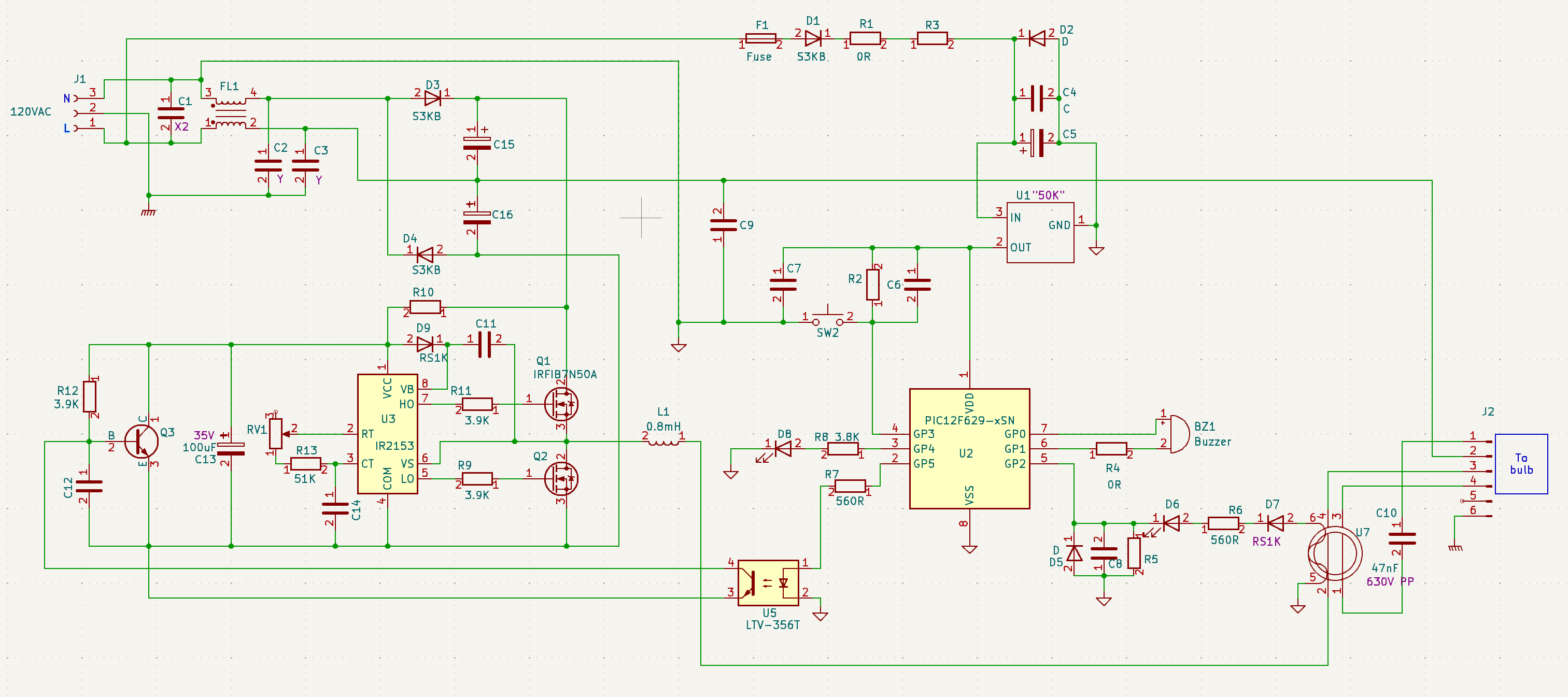Just for fun I thought I would figure out the workings of this power supply for a consumer water purification device which features a ~30W uv lamp. It failed and I got a new one so I'm free to take it apart. Most of it seems straighforward but I have a couple of questions.
The PIC microcontroller is powered by a SOT23-3 chip marked "50K". Anyone know what this might be? It looks like it might be a voltage regulator. It's powered from the AC line input through a large resistor and a diode. The IR2153 is powered in a similar way but it has an internal zener that clamps vcc to 16V. Would this little chip have something similar or have I missed something in the circuit?
The other question relates to the 4 connections to the lamp. One wire gets the square wave from the power mosfets after smoothing by a 0.8mH inductor. Another is ground. The third and fourth wires are connected by a capacitor. I don't understand why there are two wires going through the current sense transformer. How does this bulb work and what is the function of the third and fourth wires?
